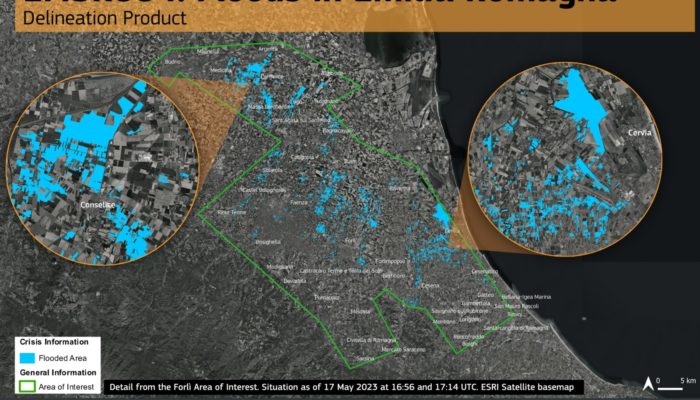
Italy has recently been struck by a series of catastrophic floods that have claimed lives, displaced thousands of people, and caused extensive damage to infrastructure. These floods were triggered by an extraordinary amount of rainfall, equivalent to six months’ worth, occurring within few days. The culmination of three distinct meteorological events, with low-pressure systems over the Thyrrenian Sea, exacerbated the situation. In this article, we will delve into the meteorological phenomena behind these floods, emphasizing the role of orographic lifting and its consequences, while also considering other factors influencing the severity of the floods.
Understanding the Meteorological conditions:
During the days in question, May 2nd, 5th, and 16th, Italy experienced three distinct low-pressure systems, situated over the Thyrrenian Sea. The interaction between these cyclonic systems and the northeastern (NE) wind along the Adriatic side of the Apennines generated a meteorological phenomenon called “stau” or “orographic lifting.” This process occurs when the NE wind encounters the mountain range, causing it to ascend and cool as it rises over the higher elevations. As the air ascends, it undergoes adiabatic cooling, leading to condensation and cloud formation. Consequently, precipitation is enhanced on the windward side of the mountains, which, in this case, would be the eastern slopes of the Apennines facing the Adriatic Sea. The orographic lifting of moist NE winds over an extended period can result in persistent and heavy rainfall on the eastern slopes of the Apennines.
Implications for Flooding:
Prolonged and intense rainfall can saturate the ground, increasing river levels and posing a significant risk of flooding. As the soil becomes saturated, excess water rapidly runs off into rivers and streams. The continuous supply of moisture from the prolonged NE winds further enhances the runoff on the eastern side of the mountains. This increased runoff can overwhelm drainage systems and lead to flooding in low-lying areas. The prolonged stau effect, coupled with enhanced runoff, can cause rivers and streams originating from the Apennines to rise rapidly. The accumulation of water surpassing the riverbanks’ capacity results in flooding along the watercourses. In regions characterized by steep terrain and narrow valleys, this combination of heavy rainfall and enhanced runoff can trigger flash floods. Such floods occur suddenly, leading to dangerous and localized inundation.
Role of Climate Change:
The occurrence of severe floods in Italy and other regions worldwide is influenced by multiple factors, and climate change plays a significant role. The warming of the atmosphere, resulting from human-induced climate change, increases the likelihood of extreme rainfall events. Since the start of the industrial era, global temperatures have risen by more than 1°C, and unless substantial emissions reductions are implemented by governments worldwide, temperatures will continue to rise. While it is important to conduct specific studies to attribute this particular event to climate change, the broader trend of a warming climate magnifies the risk of intense rainfall and subsequent flooding, emphasizing the urgency of taking action to mitigate and adapt to the impacts of climate change. By addressing the root causes of climate change, we can strive to build resilience in communities and minimize the devastating consequences of future flooding events. It is crucial to acknowledge that the specific impacts of flooding during prolonged cyclonic events may vary depending on various other factors. The intensity and duration of rainfall play a significant role, as do the topography of the affected areas and the capacity of local drainage systems. Additionally, the condition and management of river systems also influence the extent of flooding. In this case, local hydrologists have confirmed that the flood wave on May 16th and 17th was faster due to the drier soil during the initial event, creating a positive feedback loop as rivers were already at maximum capacity.
Conclusion:
The recent devastating floods in Italy highlight the intricate interplay between meteorological phenomena and the resulting catastrophic consequences. The combination of prolonged heavy rainfall, orographic lifting, and enhanced runoff can lead to severe flooding, posing a significant threat to lives and infrastructure. Understanding these meteorological factors is essential for effective disaster preparedness and response. By considering the intensity and duration of rainfall, the topography of vulnerable areas, and the management of river systems, authorities can work towards mitigating the impact of future flooding events and safeguarding communities at risk.
